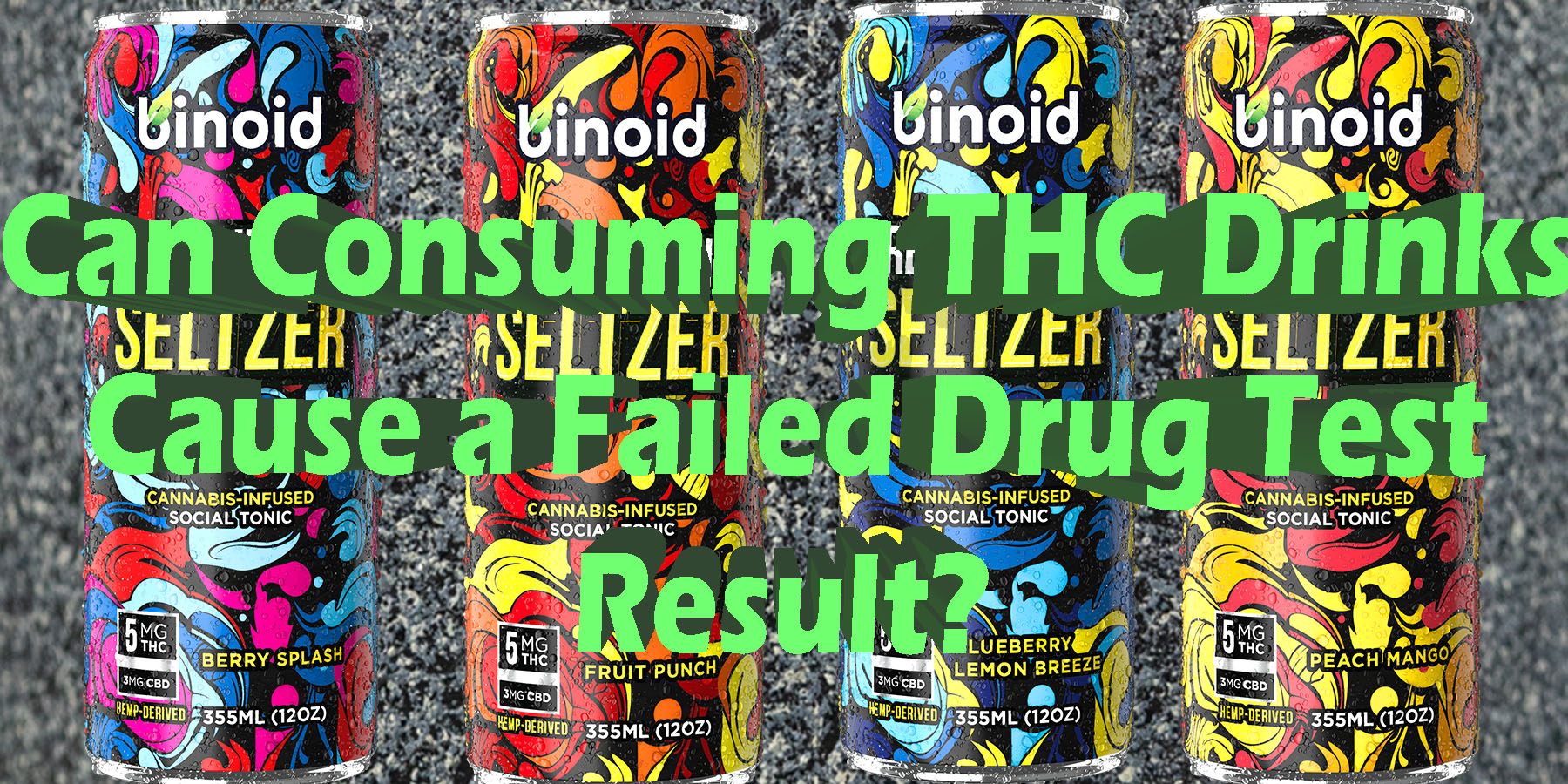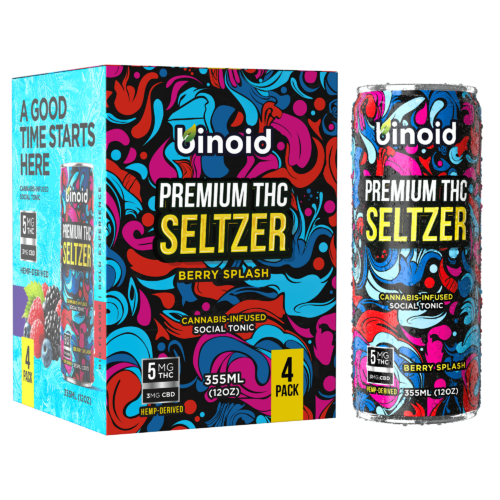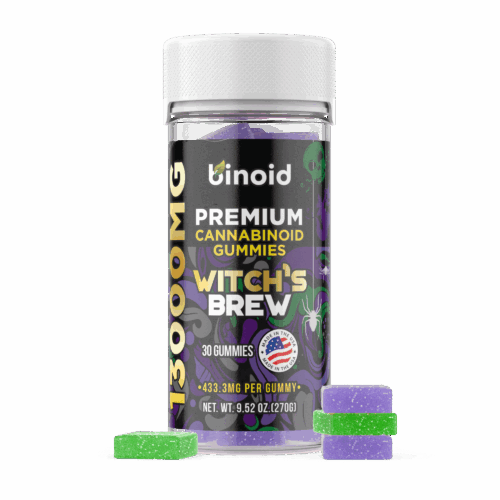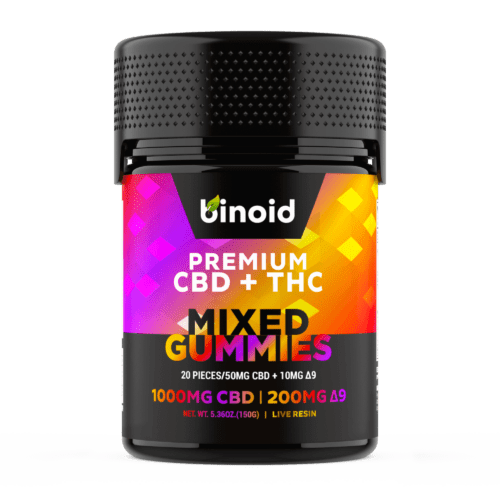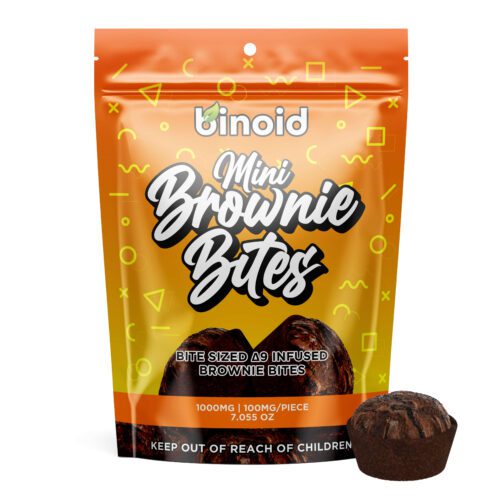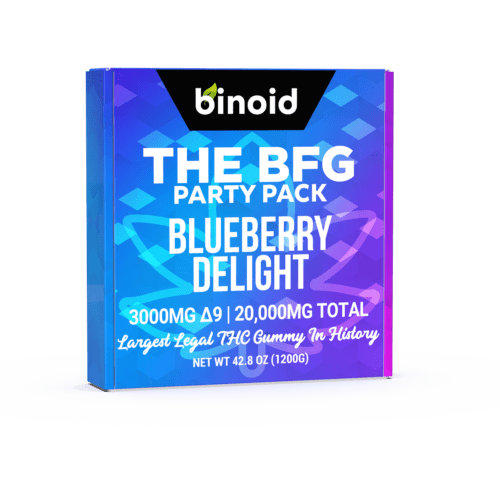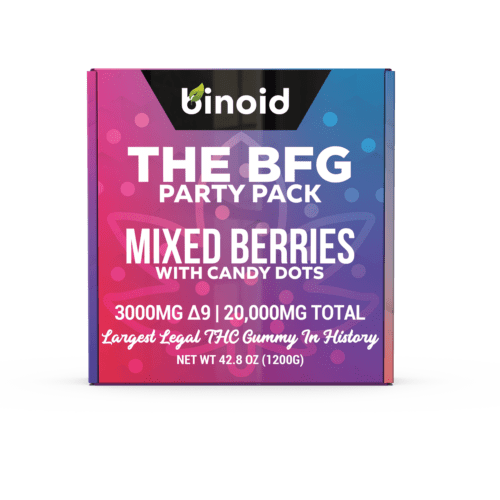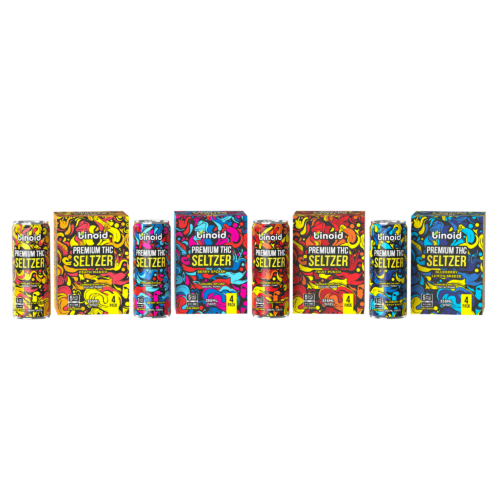There’s a satisfying hiss as you crack open a chilled can, frost condensing on your fingertips in perfect anticipation of the first refreshing sip. In today’s ever-expanding world of cannabis, that can might hold something more than just flavored bubbles; it could be your ticket to a state of blissful relaxation. THC-infused beverages have gracefully stepped into the spotlight, quickly becoming a favorite for unwinding after a long week or mingling at a social gathering.
Yet, as you browse the gleaming dispensary coolers filled with vibrant seltzers, teas, and sodas, a practical and critical question can get lost amidst the excitement. For many people, the consequences of a mandatory drug test for employment or other reasons are a serious reality. You start to wonder if enjoying this modern, sociable way to consume cannabis could have unforeseen professional or personal repercussions. It sparks a crucial internal dialogue between the desire for a relaxed evening and the non-negotiable need to maintain a clean record.
Navigating this landscape requires more than just an appreciation for flavor; it demands a clear understanding of how these drinks interact with your body and the tests designed to screen for them. Knowing the facts is the only way to make a truly informed decision, ensuring your moments of euphoria don’t lead to future complications.
To Buy THC Drinks Click Here
Recommended products
Some Vaulable Insights into THC
To have a meaningful discussion about THC drinks, we must first start with their core component: Tetrahydrocannabinol (THC). THC is the most famous and abundant cannabinoid found within the cannabis plant, and it serves as the primary engine for the plant’s psychoactive effects. When you hear people talk about the “high” from cannabis, they are referring to the suite of feelings and perceptual shifts orchestrated by THC.
Its unique molecular structure allows it to interact with our body’s internal systems in a way that can lead to a wide range of experiences, from blissful euphoria to profound relaxation. Understanding THC is the first step in understanding any product that contains it, as its inherent properties are the foundation upon which every beverage is built and every experience rests. The spectrum of effects produced by THC originates from its interaction with our body’s endocannabinoid system (ECS). The ECS is a vast and complex network of receptors that acts as a master regulator, helping to maintain internal balance, or homeostasis, across numerous physiological processes.
Our bodies create their own natural cannabinoids, called endocannabinoids, that fit perfectly into these receptors to modulate things like mood, sensation, and appetite. THC’s molecular structure is so remarkably similar to our own endocannabinoids that it can also bind to these receptors, particularly the CB1 receptors that are highly concentrated in the brain and central nervous system. However, THC’s influence is often more powerful and lasts longer than our body’s natural compounds, leading to the noticeable and celebrated shifts in consciousness that define the cannabis experience.
The immense and growing popularity of THC in contemporary culture is a direct reflection of a collective search for new and sophisticated ways to enhance our leisure and well-being. As society evolves, many people are looking beyond traditional recreational choices, seeking experiences that offer a different kind of release, connection, or creative spark. The versatile nature of THC is central to its appeal; it can serve as a catalyst for a vibrant social gathering or as a quiet companion for an evening of introspection.
This widespread interest has fueled a massive surge in product innovation, bringing THC out of the shadows and into the light of modern, mainstream lifestyles. This popularity also brings with it a greater need for consumer education, ensuring that users are well-equipped to engage with this powerful compound in a responsible and beneficial way.
Recommended products
Entering the World of THC Drinks
With a foundational understanding of THC, we can now look at how it is delivered in this exciting and accessible format. In the ever-expanding universe of cannabis products, THC drinks have emerged as a particularly exciting and accessible option. At their core, THC drinks are simply beverages that have been infused with a measured dose of Tetrahydrocannabinol. These pre-made and packaged drinks often offer more socially acceptable way to consume cannabis.
Unlike traditional edibles, which can have a delayed and sometimes unpredictable onset of effects, many THC drinks are crafted using advanced technologies that allow for a quicker and more controlled experience. This makes them an attractive choice for those who are new to cannabis or for anyone seeking a more manageable and predictable journey into a state of blissful relaxation. The convenience of a ready-to-drink beverage also adds to their appeal, eliminating the need for any preparation or paraphernalia.
The variety of THC drinks on the market is truly astonishing, with a beverage to suit almost any palate or occasion. These drinks are crafted through a process that involves infusing a base liquid with a THC extract, often a water-soluble form to ensure even distribution and absorption: absorption. So, let’s break them down here for a moment:
THC Seltzers: These beverages have quickly become the darlings of the THC drink world, perfectly capturing the modern consumer’s desire for light, refreshing, and low-calorie options. Often presented in slim, elegantly designed cans, THC seltzers are a direct and compelling alternative to the ubiquitous alcoholic hard seltzers that have dominated social scenes. They typically feature crisp carbonation and are infused with subtle, natural fruit flavors like lime, grapefruit, or black cherry, offering a sophisticated taste that is never overpowering. The primary appeal lies in their “sessionable” nature; with low doses of THC, usually between 2mg and 5mg, consumers can enjoy several over an evening without feeling overwhelmed. This controlled experience provides a gentle, uplifting buzz that enhances social interactions rather than hindering them. The use of nanoemulsion technology ensures a quick onset, so the gentle euphoria can be felt in as little as 15 minutes, making the entire experience more predictable and enjoyable. For many, THC seltzers represent the future of social drinking, offering all the bubbly fun with a decidedly more blissful twist. They are the ideal choice for a relaxed afternoon by the pool, a backyard barbecue, or any occasion that calls for light-hearted refreshment.
THC Sodas: For those with a sweet tooth and a love for classic Americana, THC-infused sodas offer a delightful and nostalgic journey. These beverages tap into cherished memories of childhood treats, delivering familiar flavors like rich root beer, creamy orange cream, classic cola, and zesty ginger ale, all with a modern cannabis twist. Unlike the subtlety of seltzers, THC sodas are bold in flavor, providing a full-bodied and satisfyingly sweet experience that makes consuming cannabis feel like a genuine indulgence. They often come in slightly higher doses than seltzers, catering to consumers looking for a more pronounced euphoric effect to accompany the vibrant taste. THC sodas seamlessly blend the worlds of confection and cannabis, creating a product that is both comforting and exhilarating in every bubbly sip.
THC Waters: THC-infused waters are the embodiment of “less is more,” designed for the purist and the health-conscious consumer who prioritizes clean, simple hydration. These beverages strip away all non-essentials, offering a product that is often free of sugar, calories, and artificial ingredients, focusing solely on the core components: purified water and fast-acting, water-soluble THC. The flavor profile is typically neutral or features a very delicate hint of natural fruit essence, such as cucumber, lemon, or berry, which is meant to refresh rather than overwhelm the palate. THC waters are the perfect companion for a workout, a yoga session, or any activity where maintaining hydration is as important as achieving a state of calm focus. The experience is often described as a “clean” high, a clear-headed sense of well-being and gentle bliss that complements an active and mindful lifestyle.
THC Lemonade: There is perhaps no beverage more universally associated with refreshment than lemonade, and its THC-infused counterpart elevates this classic to a new level of chilled-out bliss. The inherent tartness and zesty sweetness of fresh lemons provide a perfect counterbalance to the subtle earthy notes of cannabis, creating a flavor profile that is both invigorating and incredibly satisfying. Brands offer a wide spectrum of lemonade styles, from classic cloudy versions to sparkling varieties and exciting flavor fusions like strawberry or raspberry lemonade. The dosage can range from sessionable low-dose options to more potent “high-dose” versions for experienced consumers, making it a versatile choice for different occasions and tolerance levels.
THC Tea: Infusing tea with THC creates a beverage that feels both ancient and modern, combining the time-honored wellness rituals of tea drinking with the contemporary science of cannabis infusion. This category offers a wonderfully diverse range of experiences, tailored to specific moods and times of day. Consumers can find soothing chamomile or lavender blends infused with indica-dominant THC for a deeply relaxing evening experience designed to promote tranquility and restfulness. Conversely, there are uplifting green tea or black tea varieties combined with sativa-leaning THC, perfect for sparking creativity or enjoying a calm yet alert state of mind during the day. The infusion process is carefully managed to preserve the delicate flavors of the tea leaves while ensuring consistent and reliable dosing. For many users, THC tea is a holistic experience.
THC Coffee: The combination of cannabis and coffee, often dubbed the “hippie speedball”, offers a truly unique and dynamic experience that intrigues both coffee aficionados and cannabis enthusiasts. These products, available as pre-made cold brews or ground coffee for home brewing, blend the stimulating, alertness-promoting effects of caffeine with the euphoric and perception-altering qualities of THC. The result is a state of being that many users describe as “alert-relaxation”—a focused and energized mind coupled with a calm and relaxed body. This can be an ideal combination for creative projects, focused work sessions, or social situations where one desires to be both engaged and at ease. However, the interplay between a stimulant (caffeine) and THC can be complex, and brands carefully formulate these beverages to create a balanced effect, often using specific strains and doses that complement the coffee’s profile.
THC Cocktails or “Mocktails”: These are a testament to the growing sophistication of the cannabis beverage market, offering a mature and complex drinking experience without the alcohol. These ready-to-drink creations are expertly crafted to replicate the flavor profiles of classic cocktails, such as margaritas, Moscow mules, gin and tonics, and spritzes. Talented mixologists use a combination of natural botanicals, juices, and flavor extracts to build layers of taste that mimic the complexity of traditional spirits. The result is a beverage that is sippable and satisfying, providing the ritual and social enjoyment of a cocktail but with the gentle, blissful effects of THC instead of alcohol. These products are heavily marketed towards consumers looking for sophisticated alcohol alternatives for social gatherings, dinner parties, or a relaxing evening at home. They provide a hangover-free option that still feels special and celebratory, allowing people to partake in the cocktail hour in a new and mindful way.
THC-infused Wines and Beers: This innovative and still-developing category seeks to capture the hearts of traditional beer and wine lovers by offering non-alcoholic versions of their favorite beverages infused with THC. The production process is highly technical, typically involving the creation of a traditional beer or wine which is then carefully dealcoholized before being infused with water-soluble THC. The primary challenge and goal for producers is to retain the original beverage’s authentic flavor, aroma, and mouthfeel, from the hoppy bitterness of an IPA to the delicate fruit notes of a rosé. When successful, these products provide an experience that is remarkably similar to drinking a regular beer or wine, making them a seamless substitute in social settings where these beverages are customary. They allow consumers to enjoy the familiar taste and ritual they love while experiencing a pleasant cannabis buzz instead of the effects of alcohol, representing a fascinating intersection of classic brewing, winemaking, and modern cannabis science.
THC Drink Mix: For the ultimate in convenience, portability, and customization, THC drink mixes are an increasingly popular choice. These products come in the form of a soluble powder or a liquid concentrate, packaged in small, discreet single-serving sachets or multi-serving containers. The primary advantage is their versatility; a consumer can instantly transform any beverage of their choice—be it a simple glass of water, a smoothie, a juice, or even a cup of hot tea—into a precisely dosed cannabis drink. This makes them perfect for travel, hiking, or any on-the-go situation where carrying a canned beverage isn’t practical. Because the user controls the liquid, they also control the final taste, calories, and overall character of their beverage, offering a level of personalization that pre-packaged drinks cannot match. THC drink mixes empower consumers to be their own cannabis mixologists, providing a consistent and reliable effect in whatever form they choose.
The audience for THC drink is exceptionally broad and continues to grow as the stigma around cannabis recedes. A primary group of consumers are those who are “canna-curious” but are put off by the idea of smoking or vaping. The familiar and socially acceptable format of a beverage provides a much less intimidating entry point. Another significant demographic is composed of individuals actively looking to reduce or replace their alcohol consumption.
THC drinks offer a way to participate in social rituals and achieve a pleasant buzz without alcohol and its associated next-day consequences. Plus, the growing wellness movement has drawn in health-conscious consumers who are attracted to the many low-sugar, low-calorie, and all-natural options that align with a more mindful lifestyle. But what about when it comes down to taking a drug test?
Recommended products
The Core Question: Why THC Drinks Trigger a Positive Test
To put it directly: yes, consuming THC drinks can absolutely cause you to fail a drug test. The reason is simple and has nothing to do with the form in which you consume cannabis. Whether you smoke it, eat it in a gummy, or drink it in a seltzer, your body processes the active compound—Tetrahydrocannabinol (THC)—in the same fundamental way. The core of the issue lies not with THC itself, but with what your body turns it into after you’ve enjoyed that chilled-out feeling.
When THC enters your bloodstream, it travels to the liver, where it is metabolized. This process breaks the THC down into several byproducts, which are called metabolites. The most important of these for drug testing purposes is a specific, non-psychoactive metabolite called “11-nor-9-carboxy-THC”, more commonly known as THC-COOH.
Standard drug tests, particularly the common urine screen used by most employers, are not designed to detect the active, euphoric THC compound. Instead, they are specifically calibrated to search for the presence of THC-COOH. The logic is that THC-COOH is an undeniable marker of cannabis consumption that lingers in the body for a much, much longer time than the parent THC molecule. Unlike alcohol, which is water-soluble and is flushed from the body relatively quickly, THC and its metabolites are fat-soluble. This means they are stored in the body’s adipose (fat) tissues and are released slowly over time through urine and feces. This fat-solubility is the primary reason why cannabis can be detected for days, weeks, or even more than a month after your last sip.
Recommended products
Factors That Influence Detection Times
Determining how long THC from a cannabis beverage will remain detectable in your system isn’t a simple calculation; it’s a deeply personal equation with multiple moving parts. There is no magic number or universal timeline. Instead, the detection window is a unique blueprint shaped by your own body, your habits, and the specifics of what you consume. Think of it less like a stopwatch with a fixed time and more like a complex weather forecast, where several distinct conditions converge to create the final outcome. Understanding these individual factors is the only way to move from a vague sense of uncertainty to a clear-eyed appreciation of the situation.
Factor #1: Frequency and Volume of Consumption
This is the most critical variable in the entire equation. The body’s storage of THC-COOH is cumulative, much like a rain barrel filling with water. For a true first-time user who has a single, low-dose THC seltzers at a party, the “barrel” is empty to start, and the small amount of metabolite “water” that enters may be drained and cleared from their system within 3 to 5 days. Now consider a moderate or “weekend” user who enjoys a couple of THC sodas every Friday and Saturday.
Their barrel never fully drains during the week, so the baseline level of THC-COOH is always elevated, pushing their detection window out to a week or more. For a chronic, daily user, the situation is entirely different. They are constantly adding significant amounts of THC-COOH to a barrel that is already overflowing. Their fatty tissues become saturated with these metabolites, creating a deep reservoir that slowly “leaks” into their system for a very long time. For these individuals, it is not uncommon for a urine test to remain positive for 30, 45, or in some documented cases, even more than 60 days after their last use.
Factor #2: Potency and Dosage
The strength and quantity of the THC drinks you consume have a direct, linear relationship with the amount of THC-COOH your body must process. In the early days of cannabis beverages, a 5mg dose was standard. Today, the market is filled with a wide array of options, including “high-potency” THC teas and mocktails containing 10mg, 25mg, or even 100mg of THC in a single container. Consuming one 25mg drink is not the same as consuming one 5mg drink; it introduces five times the amount of THC that needs to be metabolized and stored.
This dose-dependent reality means that a single high-potency beverage can create a detection window similar to several days of low-dose use. Furthermore, volume matters. Enjoying three 10mg THC cocktails over the course of an evening means your liver has to process 30mg of THC, dramatically increasing the metabolite load and extending the time it will take for your body to clear it.
Factor #3: Individual Metabolism and Body Fat Percentage
Your unique physiology plays a massive role in the detection timeline. Your basal metabolic rate (BMR), which is influenced by factors like age, genetics, and overall health, dictates the speed at which your body processes and eliminates compounds. A person with a naturally fast metabolism will clear THC-COOH from their blood more quickly than someone with a slower rate. However, the bigger physiological story is body fat. Because THC-COOH is lipophilic (fat-soluble), it is readily stored in adipose tissue.
A person with a higher body fat percentage has a larger “storage facility” for these metabolites. The body doesn’t just lock them away; it engages in a slow, constant process of releasing them back into the bloodstream to be filtered by the kidneys. This slow-release mechanism from fat cells is precisely why the detection window can be so long and unpredictable, as it creates a steady trickle of THC-COOH into the urine long after the initial euphoric effects have faded.
Factor #4: The Type of THC Consumed
The modern cannabis market is a complex space of different molecules, but for drug testing purposes, this variety is dangerously misleading. While most people associate “THC” with the traditional Delta-9-THC found in marijuana, many popular THC drinks, especially those sold online, are made with hemp-derived isomers like Delta-8-THC, Delta-10-THC, or even compounds like HHC. It is absolutely critical to understand that the legality of these compounds has zero bearing on drug test results.
The antibodies used in standard drug tests are not sophisticated enough to distinguish between these closely related molecules. They are all metabolized into forms of THC-COOH that are structurally similar enough to trigger a positive result. Therefore, drinking a “legal” Delta-8 seltzer presents the exact same risk of a failed drug test as drinking a traditional Delta-9 THC soda from a state-licensed dispensary. This extends to full-spectrum CBD products as well; while legal, they contain trace amounts of THC that, with regular use, can build up in the body and potentially cause a positive test result.
Factor #5: Hydration, Diet, and Exercise
These lifestyle factors have an influence, but it is minor and often misunderstood. Staying well-hydrated is good for overall health and kidney function, but you cannot simply “flush” THC-COOH out of your fat cells by drinking gallons of water. Attempting to do so right before a urine test is a common tactic, but it can backfire. Modern labs often test for creatinine levels and specific gravity to detect sample dilution, which could lead to a rejected sample or be flagged as an attempt to cheat the test.
Similarly, diet has a minimal impact on elimination, though a high-fat meal consumed along with a THC drink can slightly alter absorption rates. Exercise is the most complex of these factors. While a long-term fitness regimen can reduce body fat and thus lower your overall THC-COOH storage capacity, engaging in heavy exercise in the days immediately preceding a drug test can be counterproductive. Burning fat can cause a temporary surge in the amount of stored THC-COOH being released into your bloodstream, potentially increasing the concentration in your urine at the worst possible time.
Recommended products
A Guide to Different Types of Drug Tests
The type of drug test administered is a critical piece of the puzzle, as each method uses different technology and offers a unique window into a person’s consumption history. Understanding how these tests works reveals why they are used in different scenarios and why their results can vary so widely:
Urine Tests (Urinalysis): This is the undisputed standard for workplace drug screening across the country. Its popularity stems from a combination of being non-invasive, relatively inexpensive, and providing a long detection window that is ideal for employers looking to enforce a drug-free workplace policy rather than determine real-time impairment. The process typically involves a two-step method. First, the sample undergoes an initial screening test, usually an immunoassay, which is designed to be fast and sensitive. This screen looks for THC-COOH metabolites at a concentration above a specific cutoff level, typically 50 nanograms per milliliter (ng/mL). If the sample tests positive, it does not immediately result in a failed test. Instead, it is sent for a more sophisticated and definitive confirmation test using equipment like a gas chromatography-mass spectrometry (GC-MS) machine. This confirmation test is highly accurate, eliminates potential false positives from the initial screen, and uses a lower, more precise cutoff (usually 15 ng/mL) to confirm the presence of the metabolite. It is this two-tiered system that provides the accuracy required for employment decisions.
Saliva (Oral Fluid) Tests: Gaining significant traction for roadside and post-incident workplace testing, saliva tests are valued for their ability to detect very recent cannabis use. Unlike a urine test that looks for metabolites from past use, a saliva test primarily detects the parent Delta-9 THC molecule itself. When you consume a THC drink, the liquid coats the inside of your mouth, and THC becomes trapped in the oral mucosa. A simple swab of the inner cheek collects these oral fluids, which are then analyzed. Because this method targets the active THC compound, it offers a much better correlation with the timing of potential impairment. The detection window is consequently much shorter, typically lasting from 24 to 72 hours after the last use. This makes it an excellent tool for determining if an individual has consumed cannabis very recently, but a poor tool for identifying an employee who, for example, consumed a THC beverage the previous weekend.
Blood Tests: This is the most invasive, expensive, and shortest-acting of all the testing methods. For these reasons, it is not used for pre-employment screening. Its use is almost exclusively reserved for situations where determining current, real-time impairment is paramount, such as in DUI investigations or other legal and medical emergencies. When a THC drink is consumed, THC levels in the bloodstream rise very quickly, often peaking within the hour, and then fall just as rapidly as the compound is distributed into the body’s fat tissues. A blood test measures the concentration of active Delta-9 THC circulating in the plasma at the moment of the draw. Because this window of peak concentration is so brief (often just a few hours), a blood test provides the most accurate snapshot of whether a person is actively under the influence of the substance. While THC metabolites can be detected in blood for longer, the focus of these tests is almost always on the parent compound to establish impairment.
Hair Follicle Tests: A hair follicle test provides the longest look back into a person’s consumption history, making it the most formidable screen to pass. Its methodology is ingenious in its simplicity. As your body metabolizes THC, the THC-COOH metabolite circulates in your bloodstream. This blood flow nourishes the hair follicles on your scalp and body. As the hair grows, any metabolites present in the blood are passively deposited and permanently trapped within the core of the hair shaft. Over time, this creates a historical record of consumption. For a standard test, a lab technician will cut a sample of hair about 1.5 inches long from as close to the scalp as possible. Since hair grows at an average rate of about half an inch per month, this 1.5-inch sample provides a roughly 90-day history of use. It is crucial to note, however, that a hair test cannot detect very recent use. It takes approximately 7 to 10 days for the hair containing the metabolites to grow long enough to be cut, so consumption within the last week will not show up. This method is most effective at detecting consistent, moderate-to-heavy use and is often required for jobs in federally regulated industries or for sensitive legal matters like child custody cases.
Recommended products
Is There Anything You Can Do Prior to a Drug Test in Order to Still Enjoy a THC Drink Then?
After understanding the science, this becomes the ultimate practical question. The internet is flooded with anecdotal advice and dubious products promising a guaranteed pass, but it is essential to approach this topic with a healthy dose of skepticism. The biological reality of how your body processes and stores THC metabolites is not easily overcome by quick fixes.
The vast majority of so-called “detox kits” or “cleanses” rely on one of two ineffective principles: dilution or attempting to mask the sample. Dilution kits work by having you drink large volumes of liquid while taking supplements like Vitamin B12 and creatinine. The goal is to dilute your urine to lower the THC-COOH concentration below the test’s cutoff level, while the supplements are meant to restore the color and chemical markers of a normal sample. However, modern labs are wise to this; they routinely test for specific gravity and creatinine levels to detect dilution, which can lead to your sample being flagged as invalid—an outcome often treated the same as a positive result.
Other methods and home remedies are entirely without scientific merit and cannot alter the fundamental process of fat cells slowly releasing stored metabolites. This brings us to the only factor you have genuine control over, and the only method scientifically proven to work, and that would be ‘time’. The single most effective way to ensure you pass a drug test is to allow your body a long enough period of abstinence for it to naturally metabolize and excrete all of the stored THC-COOH.
This is where you must be honest with yourself about your usage patterns. For instances, if you’re a very infrequent user, a week or two might be sufficient for your body to clear the metabolites. If you’re a regular or heavy user, you must plan for a much longer period of abstinence, potentially 30 to 90 days, to be truly safe for a standard urine test. This all means that the only real “strategy” is responsible scheduling.
Now, if actively seeking a job in a field that requires pre-employment screening, the only risk-free approach is to cease all consumption well in advance. If in a role that mandates random testing, any consumption at all carries an inherent risk. Ultimately, there’s no magic bullet that allows for recent consumption and a guaranteed negative test result.
A Toast to Informed Choices
The rise of the THC beverage offers a refined and modern way to relax, yet this new frontier of enjoyment comes with a hidden and serious consideration. Ultimately, the fleeting bliss from a single can leaves behind a complex and lingering chemical signature that your body archives for weeks or even months. The cold, impartial science of drug testing does not care about the craft of the beverage, its legal status, or the pleasantness of the experience; it only seeks out that specific molecular trace. Therefore, the decision to partake becomes a deeply personal risk assessment, weighing the temporary reward against the potential and significant consequences in your professional and personal life.
True empowerment in this landscape comes not from hoping to pass a test, but from fully understanding the unyielding factors at play—from your own metabolism to the type of screen you may face. With this knowledge, you can move forward not in ignorance, but with a clear-eyed awareness that the choice, and its ultimate outcome, is yours alone to make. The most satisfying sip is one taken with full comprehension, ensuring the path you choose is one you can confidently walk long after the can is empty.

